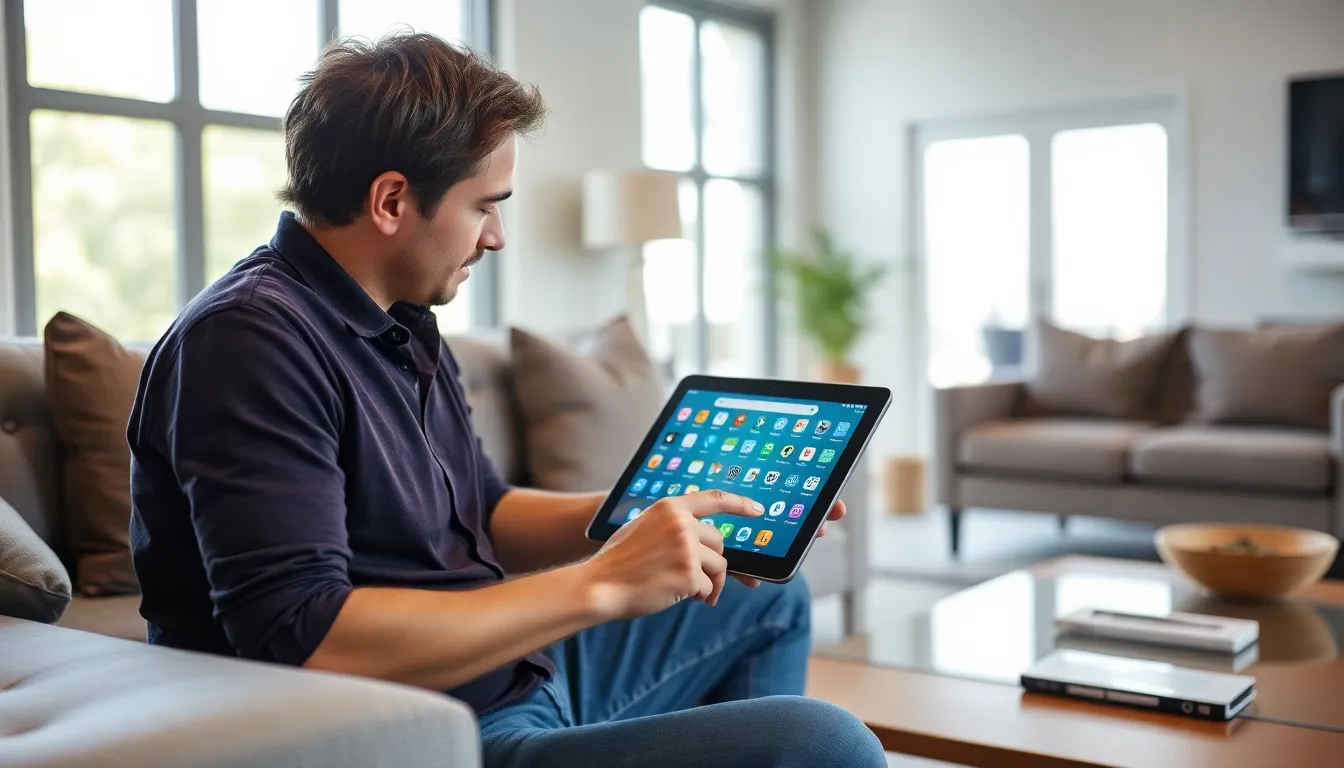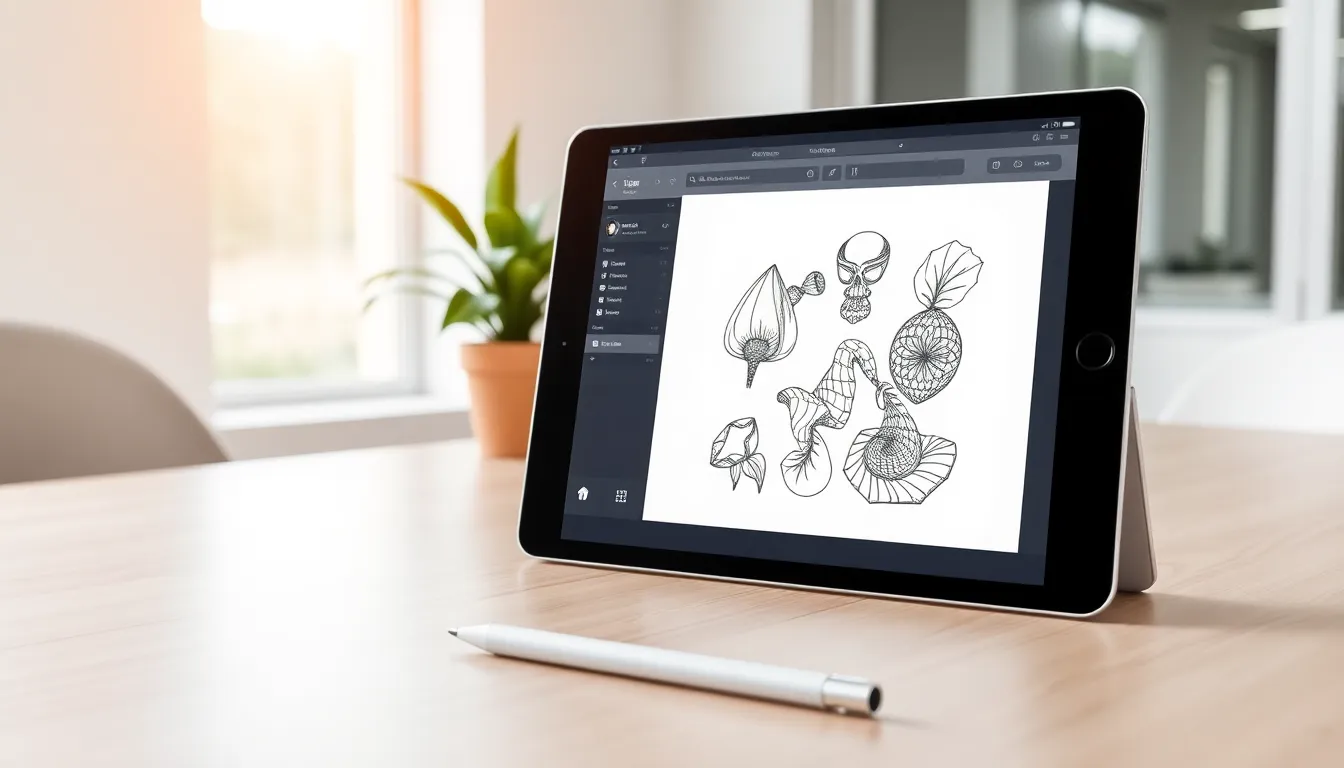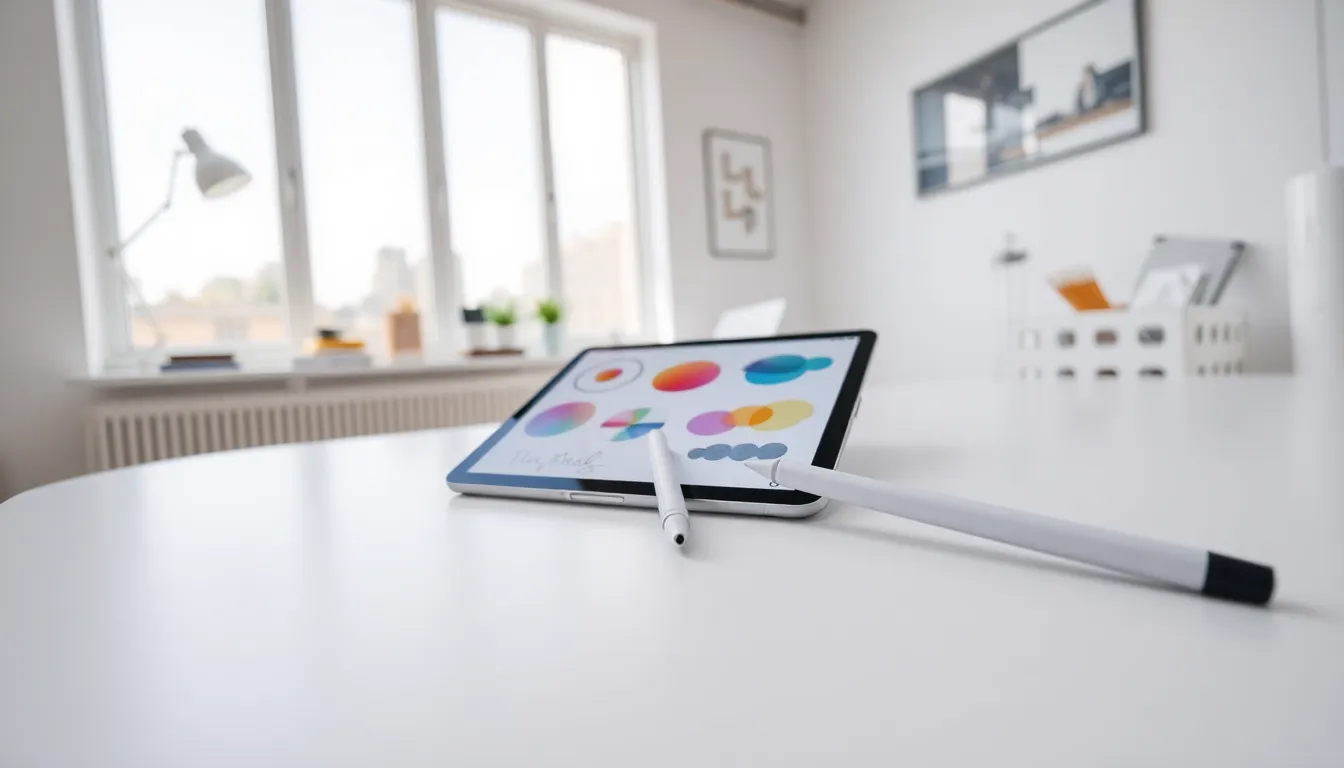In a world where screens reign supreme, the Android tablet interface stands out like a superhero in a sea of sidekicks. It’s designed to be user-friendly while packing a punch with its features. Whether you’re scrolling through social media or tackling work emails, this interface makes sure you do it with style and efficiency.
Table of Contents
ToggleOverview of Android Tablet Interface
The Android tablet interface embodies a user-centric design, tailored for ease of navigation and interaction. Customizable home screens allow users to arrange apps and widgets according to personal preferences. Icon sizes and configurations contribute to a visually appealing layout, promoting an organized workspace.
Multitasking features enhance productivity through split-screen capabilities. Users can run multiple applications simultaneously, switching between tasks with ease. Notifications appear in a streamlined manner, ensuring timely updates on messages, emails, and app activity without disrupting ongoing tasks.
Widgets serve as interactive shortcuts to various applications. These dynamic elements provide information at a glance, enabling quick access to news, weather, and calendar events. A wide range of widgets caters to different user needs, ensuring that personalization remains a key component of the interface.
The quick settings menu supports efficient adjustments to essential functions. Users can toggle Wi-Fi, Bluetooth, and Do Not Disturb modes with a single swipe. This feature allows for seamless transitions between work and leisure, improving the overall user experience.
Accessibility features are integral to the Android tablet interface. Options such as voice control, screen magnification, and text-to-speech enhance usability for individuals with diverse needs. These settings promote inclusivity, ensuring that everyone can benefit from the device’s capabilities.
Overall, the Android tablet interface stands out for its combination of functionality and simplicity. As users engage with various applications, the interface adapts to their habits and preferences, fostering a seamless interaction that enhances both productivity and enjoyment.
Key Features of Android Tablet Interface

The Android tablet interface offers several key features that enhance user experience.
Customization Options
Users enjoy extensive customization options with Android tablets. Home screens can be tailored with various apps and widgets according to individual preferences. The ability to arrange icons allows for an organized and personalized look. Users can choose from different themes and wallpapers, transforming the visual aspect of their devices. App shortcuts simplify access to frequently used applications, making navigation efficient. They can also resize widgets, providing the right balance between information and aesthetics on the screen.
User-Friendly Design
An intuitive design characterizes the Android tablet interface, making it easy for users to navigate. Essential functions stay within reach thanks to a streamlined layout. The notification system efficiently displays updates without interrupting tasks, ensuring users remain focused. Navigation gestures simplify movements between apps, promoting fluid interactions. Accessibility features cater to diverse user needs, supporting voice control and text-to-speech. Overall, the design prioritizes ease of use, allowing everyone to maximize their tablet’s potential.
Comparing Android Tablet Interface to Other Platforms
The Android tablet interface provides distinct advantages compared to other platforms.
iOS Interface
The iOS interface on tablets features a sleek, minimalist design that prioritizes ease of use. Users navigate through a grid of apps, offering less customization compared to Android. Widgets are available but are limited in size and interactivity, which reduces personalization options. Multitasking capabilities exist but may not match the fluidity found in Android’s split-screen functionality. Furthermore, the App Store provides a wide array of applications, yet users often face stricter app requirements and guidelines. The intuitive gestures in iOS enhance navigation simplicity, but the overall user experience might feel less flexible than its Android counterpart.
Windows Tablet Interface
The Windows tablet interface blends traditional desktop features with touch-friendly elements. Users encounter a Start menu that organizes applications in a grid layout, allowing quick access. Customization options include changing backgrounds and pinning apps to the taskbar, offering a range of personalization. Multitasking is robust, supporting multiple windows side by side, which enhances productivity. However, the interface may seem cumbersome for users seeking a more streamlined experience. App availability on Windows tablets can vary, with some applications lacking the touch-optimized design found on Android tablets. Overall, the Windows interface caters to users familiar with desktop environments but lacks the smoothness of tablet-native designs.
Future Trends in Android Tablet Interface
Emerging trends in the Android tablet interface focus on enhanced user experiences and functionality. Integration of artificial intelligence plays a significant role in refining personalization features. Users can expect more intuitive suggestions for apps and shortcuts based on usage patterns.
In addition, adaptive layouts are likely to become commonplace. Such layouts adjust automatically to various screen sizes, improving usability across devices. This flexibility ensures a consistent experience whether a tablet is used in portrait or landscape mode.
Cloud-based services are increasingly integrated into the Android interface. Enhanced cloud connectivity facilitates seamless data synchronization across devices, making it easier to access files and applications anytime, anywhere. Users benefit from greater accessibility and efficiency, eliminating barriers between devices.
Voice control technology continues to evolve and gain popularity. Improved voice recognition allows for more natural and effective interactions, catering to diverse user needs. This trend enhances usability for those seeking hands-free options or for users with accessibility challenges.
The incorporation of augmented reality features is on the horizon as well. Android tablets increasingly support AR applications, providing immersive experiences for gaming, education, and collaboration. Users can expect innovative ways to interact with their environment and digital content.
Security enhancements remain a priority for the Android tablet interface. Biometric authentication methods, such as facial recognition and fingerprint scanning, offer more secure user access. These measures protect sensitive information, fostering trust in digital transactions and personal data management.
The future of the Android tablet interface reflects advancements toward more personalized, accessible, and secure interactions. As these trends unfold, users will experience enriched functionality that adapts to their individual preferences and contexts.
The Android tablet interface offers a blend of functionality and personalization that sets it apart from competitors. Its user-friendly design and extensive customization options cater to a wide range of preferences, making it accessible for everyone. With features like multitasking capabilities and an intuitive navigation system, users can efficiently manage their tasks while enjoying a seamless experience.
Looking forward, the anticipated advancements in AI integration, adaptive layouts, and enhanced security measures promise to further enrich the Android tablet experience. As technology evolves, the interface is likely to continue adapting, ensuring it meets the diverse needs of its users and remains a top choice for tablet enthusiasts.






